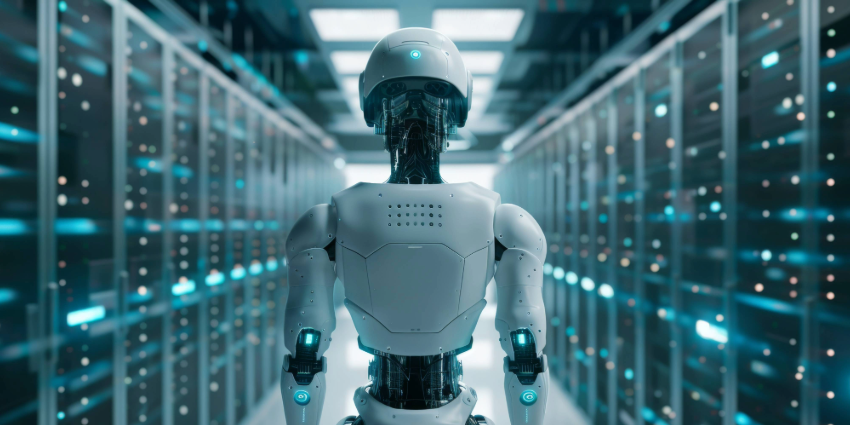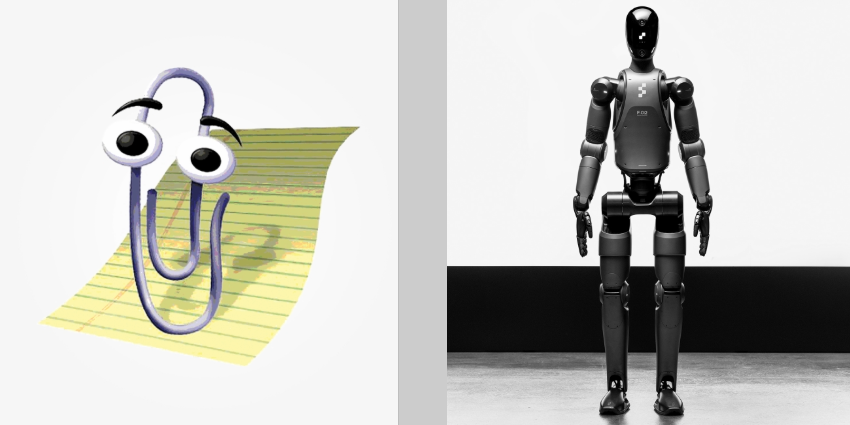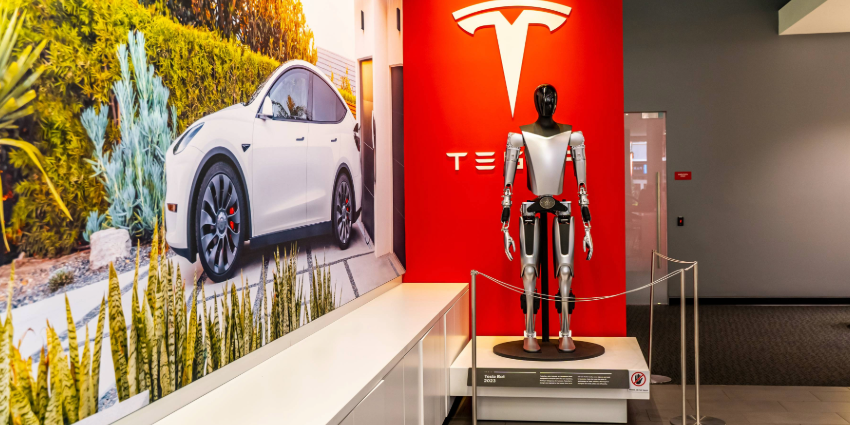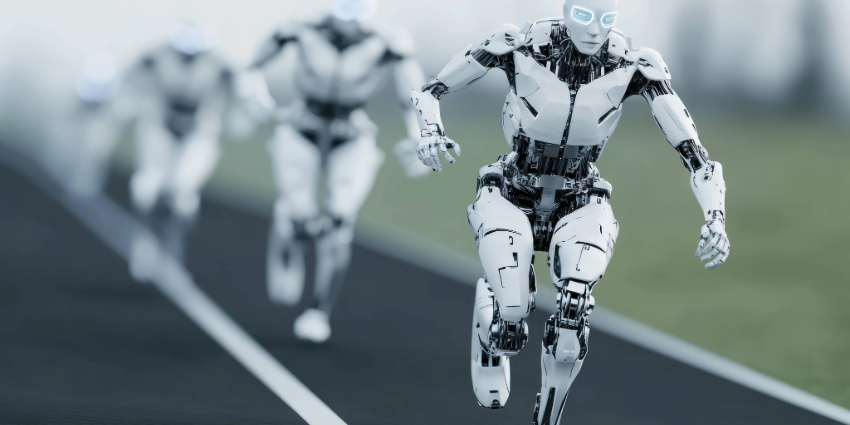Humanoid robots vs automation: which is better for your business? The answer to that question depends on your use cases. After all, while both humanoid robots, and traditional automation tools, like Robotic Process Automation systems and cobots can automate tasks, they excel in different areas.
Humanoid robots, such as those designed by Figure, Boston Dynamics, and Tesla, are designed to mimic human form and function. They can navigate warehouses, deliver packages, and even provide customer service like people. Now that these tools leverage cutting-edge AI solutions, they’re more “human” than ever.
These solutions can do much more than perform monotonous, repetitive tasks at speed. They can act as valuable assistants, care providers, and team members in various industries. But how do you really know if you should choose humanoid bots, over traditional automation tools?
AI Humanoid Robots vs Automation: The Difference
Let’s start with the basics. When we talk about “traditional automation” systems – we’re referencing Robotic Process Automation (RPA) systems, industrial robots (like the bots that build cars for automotive companies), and even cobots.
These systems are typically designed to manage simple, repetitive tasks in structured environments. For example, industrial bots are often used in manufacturing to complete welding and assembly tasks with precision and speed.
On the other hand, AI humanoid robots are designed to look like humans (with heads, torsos, and limbs). They also use AI solutions, like Natural Language Processing and computer vision, to understand their surroundings and interact with people naturally. Many of the latest cutting-edge humanoid robots can also learn and improve over time.
On a broad scale, humanoid robots are more adaptable, flexible, and collaborative than traditional automation systems – making them ideal for dynamic environments and tasks.
| Aspect | Traditional Automation | Humanoid Robots |
| Focus | Automating specific, repetitive tasks with pre-defined instructions. | Mimicking human intelligence and actions, adapting to different scenarios. |
| Examples | Robotic arms, assembly line machinery, software for automating data entry, etc. | Bots like Ameca from Engineered Arts, the Optimus bots from Tesla, or Agility Robotics’ Digit bot. |
| Adaptability | Limited: Typically designed for specific environments and tasks | High: Can learn from experience, and adapt to changing environments. |
| Human Interaction | Low: Most bots don’t require much input from humans | High: Humanoid robots are designed to work alongside real people. |
| Cost | Lower initial costs, but higher long-term costs for programming and integration. | Higher upfront cost, but potential for greater cost savings through versatility. |
Humanoid Robots vs Automation: The Benefits of Robots
For businesses exploring the benefits of humanoid robots vs automation solutions, like cobots and RPA systems, there are a few key benefits that make humanoid robots stand out. These bots aren’t just more familiar in their design; they’re also more flexible, adaptable, and effective at working alongside human teams. Here’s where humanoid robots stand out:
Flexibility and Adaptability
Most traditional automation systems, such as fixed-function industrial robots and RPA solutions, usually aim to complete specific, repetitive tasks within structured environments. They’re great at accelerating tasks like assembly or data entry – but they lack adaptability.
Alternatively, humanoid robots are engineered to operate in environments designed for humans and can adapt more effectively to changing situations. For instance, in a warehouse setting, a humanoid bot like “Digit” from Agility Robotics can perform various tasks throughout the day – picking items at a station, unloading and loading trucks, and organizing inventory.
That means a single humanoid robot can do the work of several specialized machines and human employees, streamlining operations and reducing complexity. The integration of advanced artificial intelligence (AI) and large language models (LLMs) further enhances adaptability too.
These technologies enable robots to understand and respond to complex instructions, learn from their experiences, and adjust to new tasks without extensive reprogramming. For instance, Google’s Gemini Robotics AI model integrates language, vision, and physical action, allowing robots to perform tasks such as folding paper and handling objects based on spoken commands.
Upfront Costs vs Long-Term Value
Companies considering humanoid robots vs automation tools like RPA systems or cobots probably already know the former is the more expensive choice. Although companies like Tesla are working on versions of humanoid robots that are more affordable (potentially between $20,000 to $30,000 per unit) – these bots are still generally more costly to implement.
However, humanoid robots have greater long-term value. As mentioned above, their versatility means that one system can complete a range of tasks, reducing the need to invest in multiple specialized machines. Plus, many bots are designed to be customizable and adaptable, allowing companies to program their machines with new tasks as needs evolve.
For instance, Tesla’s Optimus bots can be programmed for education, customer service, and supply chain management tasks. Additionally, humanoid robots can address labor shortages and reduce operational costs. In the manufacturing sector, companies like BMW are testing humanoid robots in real-world production settings to enhance flexibility and automate tasks that were previously considered beyond the capabilities of traditional automation.
Human Collaboration Over Augmentation
Finally, one of the biggest differences between humanoid robots and traditional automation systems, is that conventional “cobots” and similar tools are designed to simply take over tasks. For instance, cobots in the manufacturing industry might handle parts assembly and welding. On the other hand, human beings might work on more creative processes that demand expertise and dexterity.
Humanoid robots are intended to work alongside humans in shared workspaces. For instance, in healthcare, a robot might accompany a healthcare professional, helping them to move patients between beds, or conduct diagnostic reports. In retail, a humanoid robot might handle things like ringing up items and packing up products, while a human rep offers personalized advice.
Essentially, humanoid robots make human employees more efficient, productive, and even safer in their roles – rather than just handling repetitive tasks.
AI Humanoid Robots vs Automation: Which is Best?
Traditional automation tools still have value – particularly in some situations. For instance, if you need a system that can complete repetitive tasks, like manufacturing a part, in a fraction of the time of a human employee (and usually with greater accuracy) a cobot might be a good choice.
Alternatively, if you’re looking for a system that can streamline data entry processes or save employees time on time-consuming but simple customer service tasks, an RPA system or AI-powered agent might be ideal. Humanoid robots, on the other hand are excellent for dynamic environments and applications that require adaptability, versatility, and human-like dexterity.
For instance, humanoid robots could be ideal in industries like:
- Manufacturing and Logistics: In industries like manufacturing and logistics, humanoid robots offer significant benefits by performing physically demanding tasks with precision. For example, Agility Robotics’ ‘Digit’ robot is can quickly carry bins to conveyor belts, and help with data entry, effectively addressing labor shortages and enhancing operational efficiency.
- Healthcare: The healthcare sector is increasingly integrating humanoid robots to assist with patient care, rehabilitation, and support for the elderly. These robots can perform tasks such as delivering medications, assisting with mobility, and providing humanlike companionship. They’re alleviating the workload on healthcare professionals and enhancing patient experiences.
- Customer Service and Retail: Humanoid robots can automate various customer service tasks that still require a human touch. For instance, they could help a customer navigate a store, choose products or carry items. In the hospitality sector, some humanoid robots can even mix drinks, serve customers, and remember their preferences when managing orders.
Humanoid Robots: A New Era for Automation?
The demand for advanced automation across industries is nothing new. But the increasing rise of humanoid robots is paving the way to a new era of opportunities. AI Humanoid robots can do a lot more than simply perform repetitive tasks. They can work alongside humans in dynamic settings, adapting to a variety of situations quickly and efficiently.
As technology innovators like Google, Meta, and even Tesla continue to explore the humanoid robot landscape, the potential for these tools will grow. It may not be long before we see countless companies adding humanoid-style robotic assistants to their teams to handle everything from customer service to data analysis.







